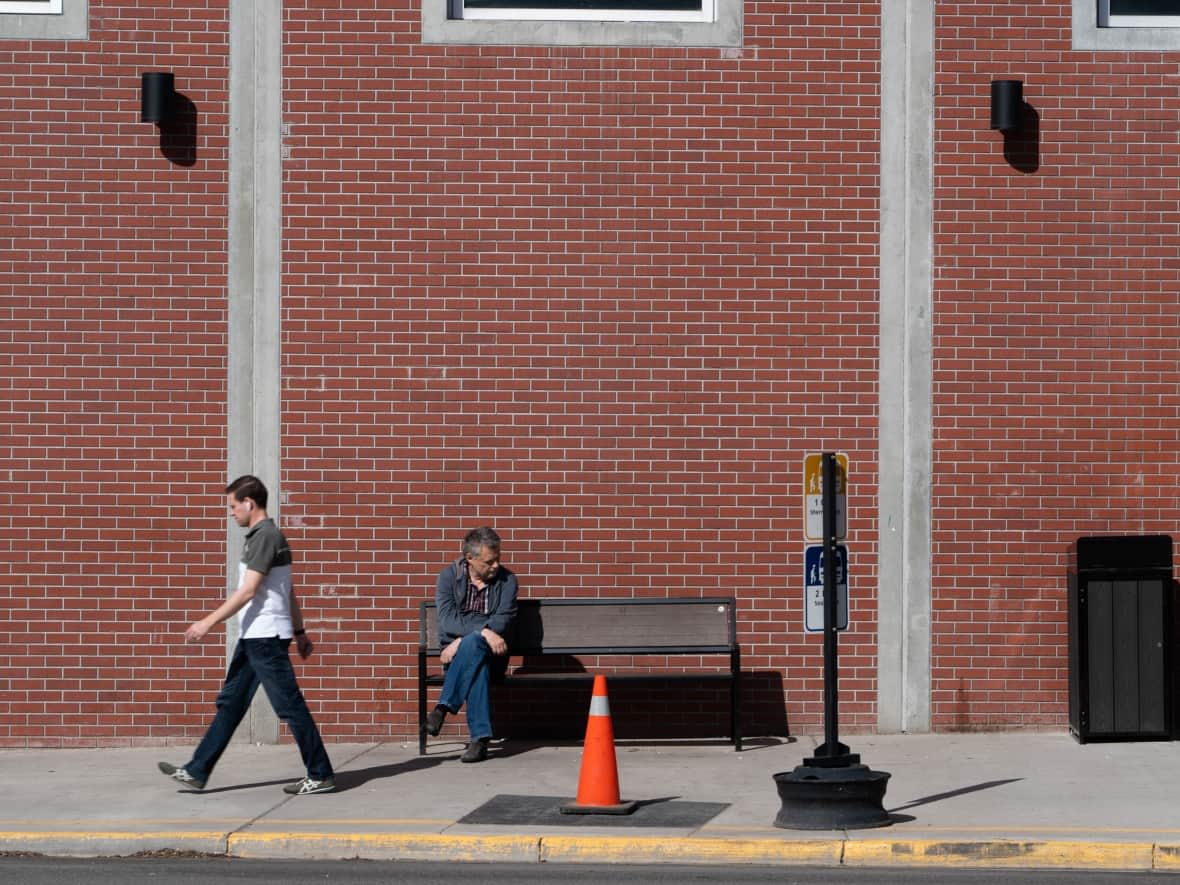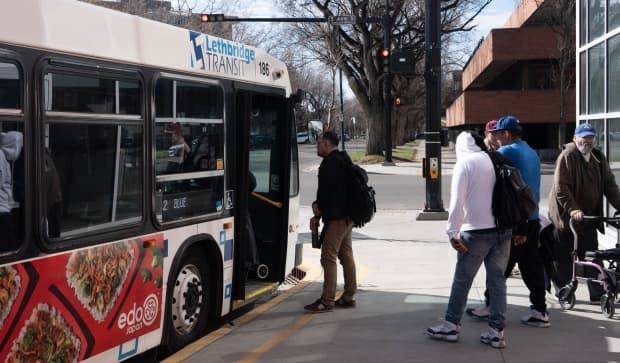Riders and drivers bemoan 'inaccessible' Lethbridge transit system

Lethbridge Transit had a ridership problem.
That was the conclusion of a 2019 KPMG report that found the southern Alberta city was spending twice as much per trip as similar-sized cities spend.
Spurred by these findings, city council pushed for a system that could maximize transit coverage with $350,000 less in the budget.
That system is CityLink, which is branded as "cityLINK." Launched in September 2021, it is a blend of high frequency bus routes in high ridership areas and low frequency and on-demand service in low-ridership areas.
Nearly two years on, some say the system is failing those who need it most and pushing its drivers to the breaking point.
Speed over coverage, says transit manager
In the past, transit wanted a bus stop within 400 metres in every residential neighborhood. Acting transit manager Darwin Juell says this made for good coverage but slow service.

"Some people like the CityLink more, now that they're getting used to it," said Juell.
CityLink prioritizes high ridership areas with buses every 15 to 20 minutes along major thoroughfares like Mayor Magrath Drive and Scenic Drive.
Routes run independently, with transfers mainly limited to the City Centre terminal and North Lethbridge bus depots or the university on the west side.
This is fine for people whose lives run parallel to those routes, like university student Demi Zalesak.
"It actually does a pretty good job because I go to the university. It's really accessible for me at school to also be able to get downtown right away and go to work."
But she also notices the issues.
There used to be a stop five houses down from Zalesak's home. Now she has to walk several blocks to catch the bus. This is no problem for her, but she knows that distance is a significant barrier for others.
Transit barriers affect independence
Leah Dormaar sees this first-hand as the advocacy co-ordinator at the Southern Alberta Individualized Planning Association (SAIPA), a not-for-profit that supports self-advocacy for people with disabilities.
Many routes within neighbourhoods stop running in the evening and on weekends, meaning an even longer walk to the nearest bus stop.
"Walking those six to eight blocks, especially in the wintertime when there's snow, ice … that is just not accessible and safe for these individuals to get to their destination," said Dormaar.
Dormaar also points to the transit app needed to book on-demand service.
"The problem is we have a lot of folks who can't read [or] who don't have access to the technology. They either can't afford a cellphone or they're not allowed to have a cellphone."
Ben Rowley is the chair of the transit advocacy committee for the South Region Self-Advocacy Network. It's a self-advocacy group that works with SAIPA.

He says inadequate transit limits people's independence if they don't have a vehicle. It's not just those living with disabilities but also seniors, low income individuals and people with children.
"You want people to be part of our community, but if they can't get to places easily, then they're not going to be."
Transit users often not riders by choice
To understand these issues, Stephnie Watson says it's important to look at who uses transit in Lethbridge.
"The majority of the ridership is people who are forced to take transit because they don't have the availability or accessibility of having their own vehicle," said Watson, who studied Lethbridge Transit operational data during their graduate thesis in in 2018.
Often, these are low-income individuals, seniors or people with disabilities.
In 2019, the city and university partnered on U-Pass, which gives students transit passes for $77 per semester. The report estimated the program would increase ridership about 30 per cent.
Watson says consolidating transit to key areas is not a bad idea, but the model needs to account for riders' needs and habits beyond surveys that may not represent the user base.
They say the system might be set up well for students but it is failing others.
Timing is everything in a system like CityLink, where routes run independently, says Watson. People must make it to transfer locations on time to keep the system ticking. However, community members say their next bus is often already on the way out by the time they arrive.
Transit aims for 85 per cent of its buses to arrive on time — within five minutes of the scheduled time. Before CityLink, many routes were between 60 and 70 per cent, Juell says.
"That, to me, is not acceptable to the public," said Juell.
While he points to CityLink's improved percentages, a closer look at data is less flattering.

Drivers burning out, says union
From January to March, 82 per cent of all buses were on time, according to city data. However, between 3 and 6 p.m., its busiest hours, that rate drops significantly, with several routes arriving on time only 50 per cent of the time.
Travis Oberg believes this is because scheduling does not properly account for pickup and drop-off times. So during high ridership, drivers face the "unachievable" task of arriving on time.
Oberg is president of the Amalgamated Transit Union Local 987, the union that represents transit operators.
In the past, routes had time built-in for drivers to stretch their legs, but now they are so focused on arriving on time that they can't do that, Oberg says.
"Now you're mentally fatigued [and] you're physically getting injured because you're not getting the ability to stretch your bodies while operating your bus," he said.
Oberg says this pressure — being on the front lines and bearing the brunt of public frustration — has led to high turnover.
"Morale is at an all-time low and it's been at an all-time low for the last two years."
More communication needed, advocates say
As Juell points out, riders can place complaints through the 311 hotline and even have those complaints escalated to a city council response.
However, Dormaar says people feel like they're not being heard. Advocates believe better feedback would integrate more perspectives through regular meetings with city council.
"I think you need to start talking to the people who are taking it and the people who are the face of transit — and that's the drivers," said Rowley.
For Watson, any future change must look at transit beyond dollars in and out and factor in the social, environmental and economic impact it has on the community.
Juell says transit continues to make changes based on available data and rider feedback.


